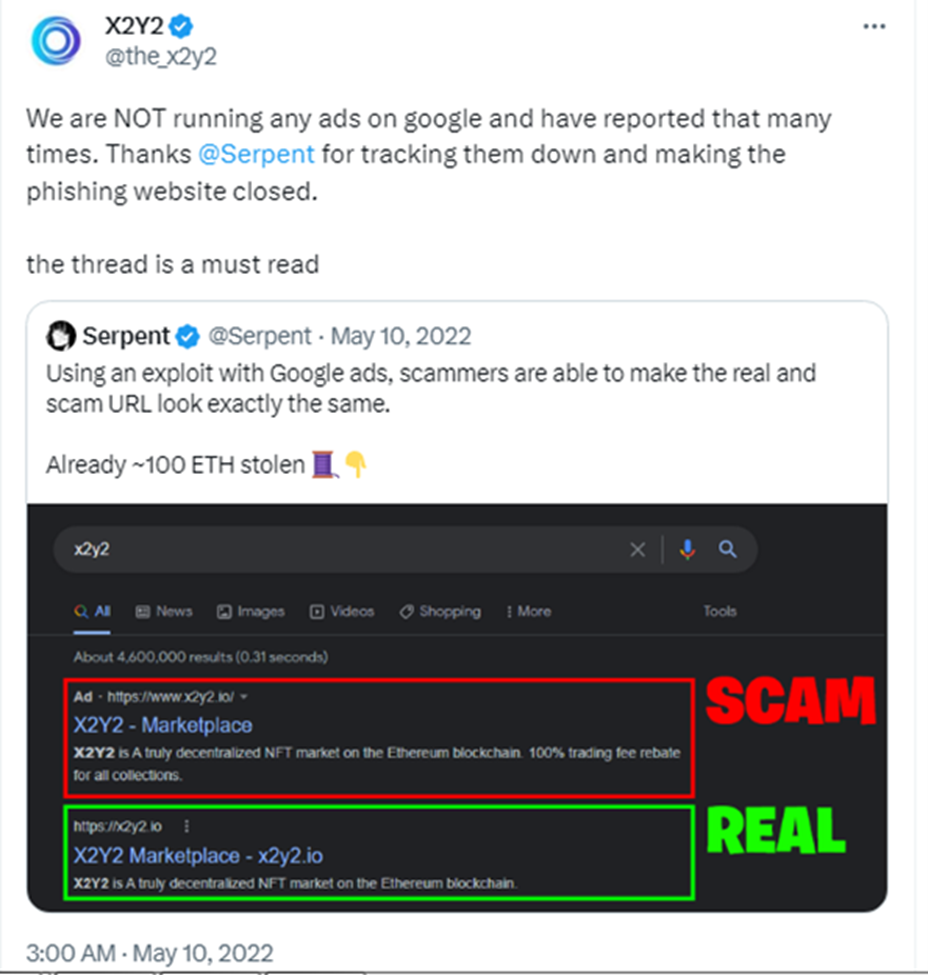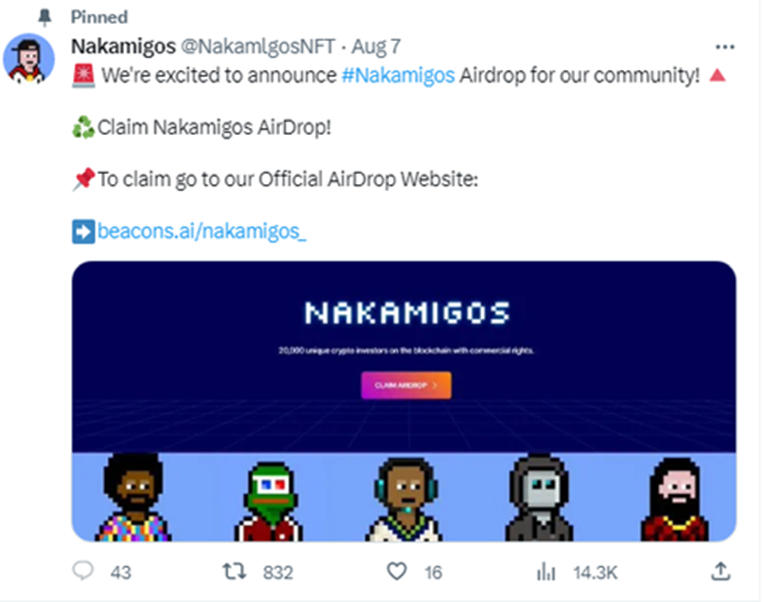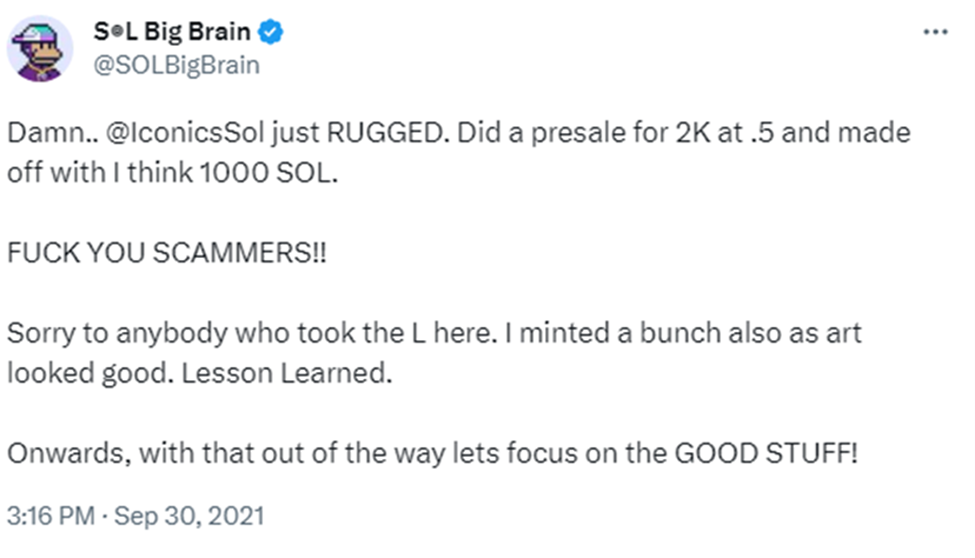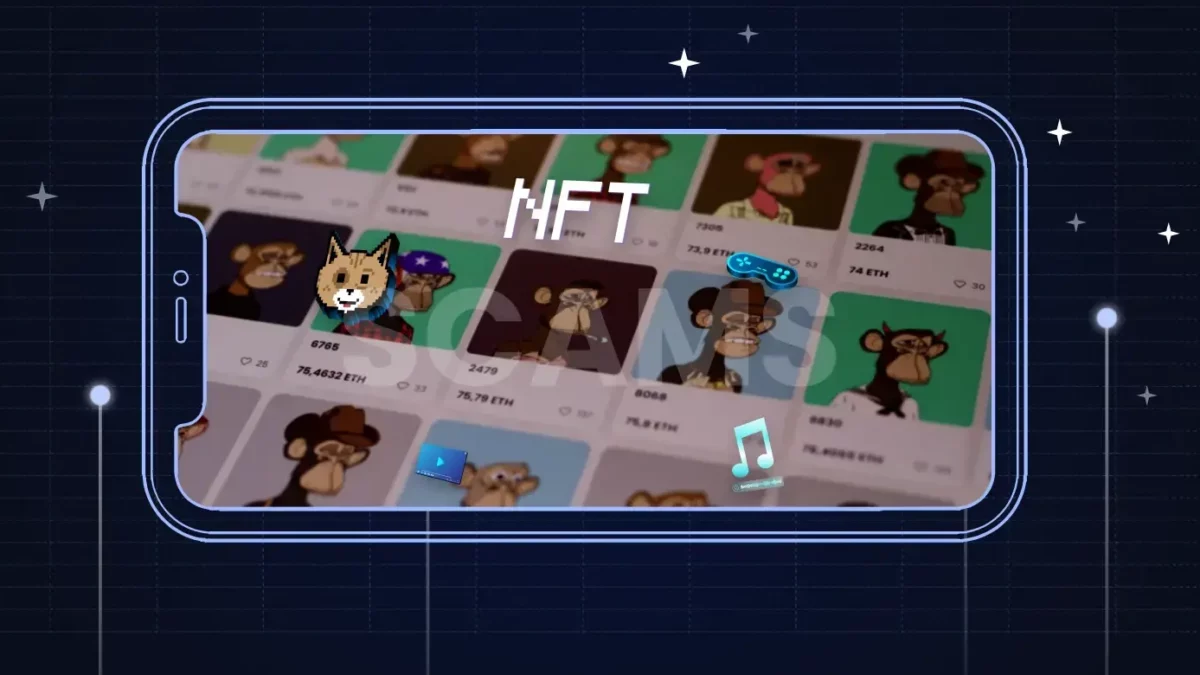Table of Contents
ToggleKey Takeaways
- NFTs are unique digital assets that represent ownership of a specific digital item or piece of art.
- NFTs have gained significant popularity in recent years, resulting in numerous high-value transactions.
- As the NFT market grows, so does the potential for scams and fraudulent activities.
The introduction of NFTs, or Non-Fungible Tokens, created a space for art and collectibles world that was quickly adopted by the masses. These unique digital assets are a hot commodity, with record-breaking sales and high-profile endorsements. However, the world of NFTs is not immune to scams and fraudulent activities.
In this blog, we’ll explore the top NFT scams you need to be aware of and provide valuable insights on how to protect your investments.
What are NFTs?
NFTs, or Non-Fungible Tokens, are unique digital assets exclusively owned by individuals and stored on blockchains. Unlike fungible assets like bitcoins that are interchangeable without affecting their value, NFTs are distinctive and irreplaceable. They can represent various digital media, such as images, movies, and audio files, and their value is determined by the market and individual preferences. NFTs can be traded for cash, crypto, or other NFTs through exchanges, with some fetching millions while others hold minimal value.
Over the past few years, NFTs have surged in popularity, attracting billionaires, celebrities, and influencers, turning them into a prominent trend. However, this popularity has also led to the emergence of NFT-related scams. Therefore, if you’re considering joining this dynamic trend, it’s essential to be informed about the various types of NFT scams and how to protect yourself from them.
Top 8 NFT Scams
| Types of NFT Scams | Description |
| Fake NFT Marketplaces: | Scammers create fake NFT marketplaces that mimic well-known platforms like OpenSea and Rarible. They trick unsuspecting users into depositing their crypto, only to disappear with their funds. |
| Stolen Content: | Some NFTs are created using stolen digital art or content without the creator’s permission. When you purchase such an NFT, you risk legal consequences and may lose your investment when the rightful owner takes action. |
| Pump and Dump Schemes: | Scammers artificially inflate the price of an NFT by creating a buying frenzy. Once the price reaches a certain level, they sell their NFTs and leave other buyers with worthless assets. |
| Phishing Scams: | Phishing websites and emails often trick users into revealing their private keys or wallet information. Once scammers have access to your wallet, they can drain your funds and steal your NFTs. |
| Impersonation: | Scammers pose as well-known artists, celebrities, or influencers to sell fake NFTs. Always verify the authenticity of the creator before making a purchase. |
| NFT Investment Funds: | Some scams promise high returns on NFT investments. Unsuspecting individuals invest their funds into these fraudulent schemes and end up losing their money. |
| NFT Flipping Fraud: | Scammers advertise NFTs as rare and valuable, convincing buyers to pay a premium. In reality, these NFTs have little to no actual value, and buyers are left with overpriced assets. |
| Counterfeit NFTs: | Scammers create counterfeit NFTs that closely resemble legitimate ones. It’s essential to verify the authenticity of an NFT before making a purchase. |
Read More: Top OpenSea Alternatives in 2023
Examples of NFT Scams
CryptoBatz Phishing NFT Scam
In January 2022, soon after the launch of the CryptoBatz collection, a phishing scam was detected. An old official tweet from December 31, 2021, had a deceptive Discord link that led users to a fraudulent Discord server. On this server, they were instructed to connect their crypto wallets for what they believed to be a verification process.
Unfortunately, those who complied with these instructions ended up losing the crypto tokens stored in their connected wallets. In a similar vein, Azuki suffered a loss of more than $750k in January 2023 when an adversary shared a malicious link on its platform.
X2Y2 Cloning Scam

Using cloned NFT marketplaces or platforms gives malicious actors unrestricted access to NFTs and Web 3 wallets. In May 2022, the X2Y2 marketplace was caught up in a fraudulent scheme through Google ads. Scammers duplicated the legitimate NFT marketplace’s website (https://x2y2.io), resulting in the theft of 100 ETH before the scam was detected.
A comparison between the two Twitter pages shows that the official account is verified, while the cloned page uses the handle “@NakamlgosNFT” instead of the genuine “@Nakamigos.”

Furthermore, the counterfeit airdrop attempted to gain legitimacy by appearing on a reputable Bitcoin website, where it included an embedded Twitter post leading users to the fake Nakamigos page. This highlights a bold new tactic employed by these deceptive actors, demonstrating their willingness to invest in paid articles to spread their fraudulent message.
Frosties NFT Rug pull scam
On another occasion of an NFT scam, there has been an NFT rug pull scam, where we saw the Frosties NFT project, which marked the first NFT rug pull of 2022, resulting in losses of $1.2 million for investors. The project’s creator executed the rug pull by deleting the NFT’s Discord server on January 9, just a few hours into the public minting phase.

Confirmation of the scam came when the official Twitter page posted an apologetic message before disappearing. A comparable case took place in October 2021 with the “Evolved Apes” NFT launch. The developer had promised investors unique Apes for participating in a fighting game and earning crypto rewards, but instead, the creator made off with 798 ETH, leaving investors with mere jpeg Ape images.
Additional Read: Top Bitcoin Ordinal NFT Collection
7 Ways to Avoid NFT Scams
Now that we’ve explored the top NFT scams, let’s discuss 7 ways to avoid falling victim to these fraudulent activities:
- Educate Yourself: Stay informed about the latest NFT scams and learn from the experiences of others in the NFT community. Awareness is your best defense.
- Verify the Authenticity: Ensure you are using legitimate NFT marketplaces and verify the identity of the creators before making a purchase.
Attention, #WombexWarriors! 🚨
Please be aware that Wombex Finance DOES NOT have an account on the Threads platform.
Any account claiming to be Wombex Finance on that platform is fraudulent and is operated by a scammer!
To avoid scams, always refer to our official channels:… pic.twitter.com/uU8fc2lTiB
— Wombex (@WombexFinance) July 8, 2023
- Research the Creators: Investigate the background and reputation of the artists or creators behind the NFT. Legitimate creators often have a strong online presence and a verified profile.
- Be Cautious of Unrealistic Returns: Avoid NFT investment schemes that promise unrealistically high returns. If it seems too good to be true, it probably is.
- Secure Your Wallet: Protect your digital wallet by using strong, unique passwords and enabling two-factor authentication (2FA) wherever possible.
Damn dude you already have a scam account on threads pic.twitter.com/QTDv3V39H7
— Nataly (@NLC972) July 6, 2023
- Avoid Phishing Scams: Be cautious when clicking on links or sharing your wallet information. Double-check website URLs and email sender addresses to avoid phishing attempts.
- Generate robust passwords: It’s crucial to generate strong passwords for your NFT accounts and crypto wallets. Additionally, implementing two-factor authentication, which could involve utilizing facial recognition or fingerprints, adds an extra layer of security, making it significantly more challenging for potential identity thieves.
New rounds of phishing attacks already underway for the poor users of FTX, BlockFi, Genesis, as a result of the Kroll data leak, which seems to be a result of a SIM swap on an employee.🤷♂️
Learn to protect yourself. Learn about phishing attacks👇https://t.co/AtcevQciVR pic.twitter.com/pbHFnhsArK
— CZ 🔶 Binance (@cz_binance) August 27, 2023
Conclusion
As the NFT market continues to grow, so does the risk of falling victim to scams and fraudulent activities. By staying vigilant, verifying the authenticity of NFTs and marketplaces, and following the ways to avoid shared in this blog, you can protect your investments in the world of digital art and collectibles. Remember, due diligence and careful consideration can go a long way in ensuring a safe and rewarding NFT experience. Stay safe, and enjoy the world of NFTs responsibly.
Related posts
Understanding the Different Types of Cryptos: Coins, Tokens, Altcoins & More Explained
Explore the major types of crypto assets and their unique roles.
Read more
PAWS Telegram Game: The New Tap to Earn Game That Is Beating Hamster Kombat
Discover how to play and earn with PAWS Telegram game.
Read more


